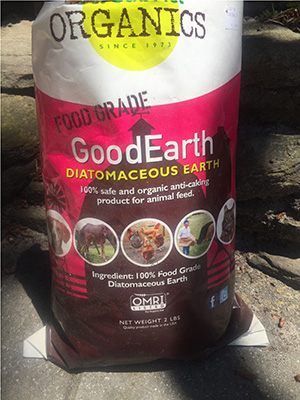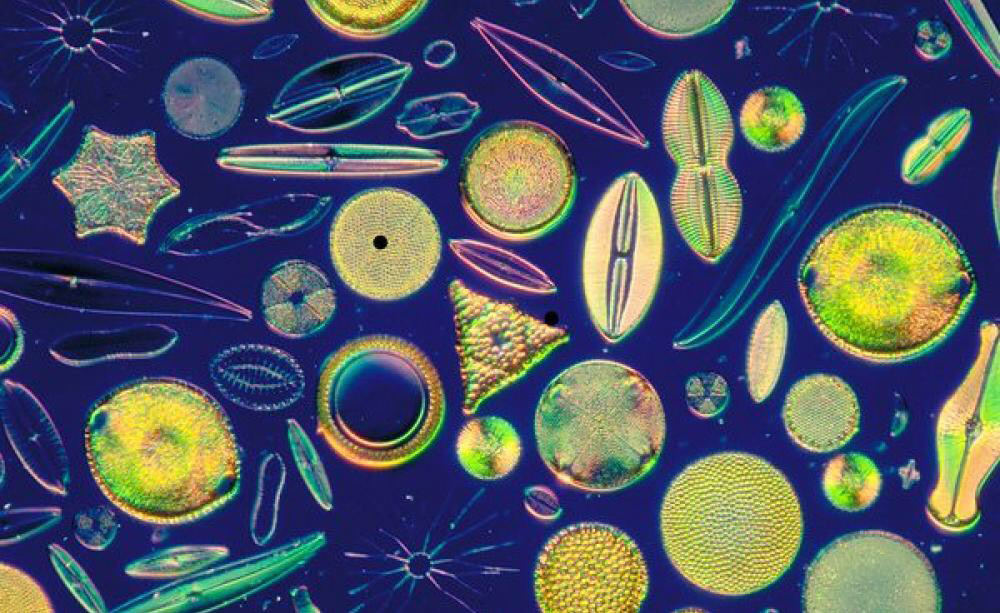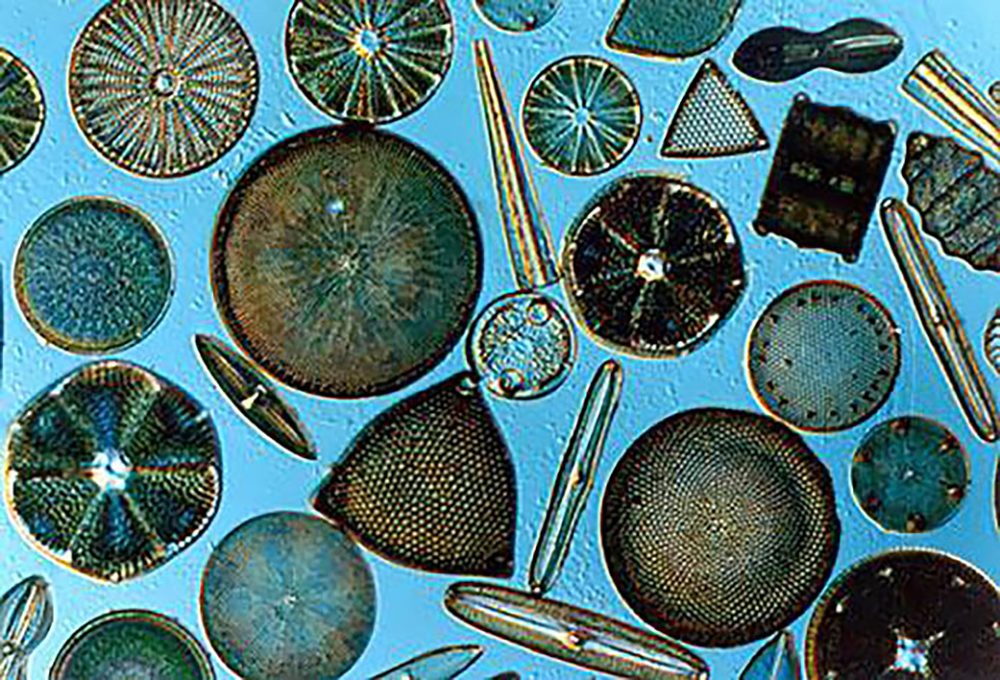By Tammy Thornton
Visit any on-line gardening forum long enough and someone is sure to mention diatomaceous earth (DE). Frequently used for pest control, diatomaceous earth is a non-toxic, organic way to control insects that have exoskeletons. Food grade diatomaceous earth in powder form can be used on vegetables and edible plants and is safe to use around children and pets.

But what is DE anyway? Diatomaceous earth is made up of diatoms, a specific type of algae found in waterways. Picture the green slime you may see covering rocks along a stream—not very appealing, right? But don’t judge these gardening friends by their first impression. Take a closer look at these single-celled organisms under a microscope and you will be wowed by their diversity and beauty. Diatoms have cell walls containing silica, forming “houses of glass” called frustules. Each of the over one hundred thousand species of diatoms has a specific shape and pattern, forming a seemingly unlimited array of dazzling designs. The fossilized remains of these diatoms form deposits that are made into a soft powder that can be sprinkled on plants infected with insects. Even in powder form, the crushed diatom skeletons have sharp edges that deter pests. The diatomaceous earth also dries out the membrane of the insect’s exoskeleton causing them to die.

Though I had heard a lot of gardeners mention DE in the past, I’ve never had much experience with it myself. Recently, my gardening friend, Carole, visited my garden and, with embarrassment, I showed her the damage insects had wreaked on my broccoli, potatoes, and kale. She introduced me to her gardening pal, diatomaceous earth, and offered me a bag of hers to try out. Though Carole’s garden is a work of art and I fully trusted her advice, I wanted to know more about this powder I would be spreading on my plants. The more I learn about diatomaceous earth, and diatoms specifically, the more I realize I’ve met a gardener’s friend. Microscopic pictures of diatoms are beautiful and fascinating—worthy of art work. My family thinks I’m crazy as I contemplate a theme wall of framed diatom pictures.
Using diatomaceous earth in the garden is fairly easy. Be sure to purchase food-grade DE, and sprinkle the powder directly onto infected plants. For plants that slugs love to attack such as hostas, sprinkle the DE directly on the soil, forming a circle barrier around the plant. Some gardeners prefer to wear a mask when applying the powder to avoid breathing in the dust of DE. We should all have access to masks these days! You will need to reapply after a heavy rain. Of course, when using DE on edibles, be sure to wash your herbs and vegetables well before eating.

One of the wonderful things about gardening is the camaraderie among fellow gardeners who are always eager to share their knowledge. It seems there is always more to learn. Hopefully, you will enjoy the benefits of meeting my new friend, diatomaceous earth.











